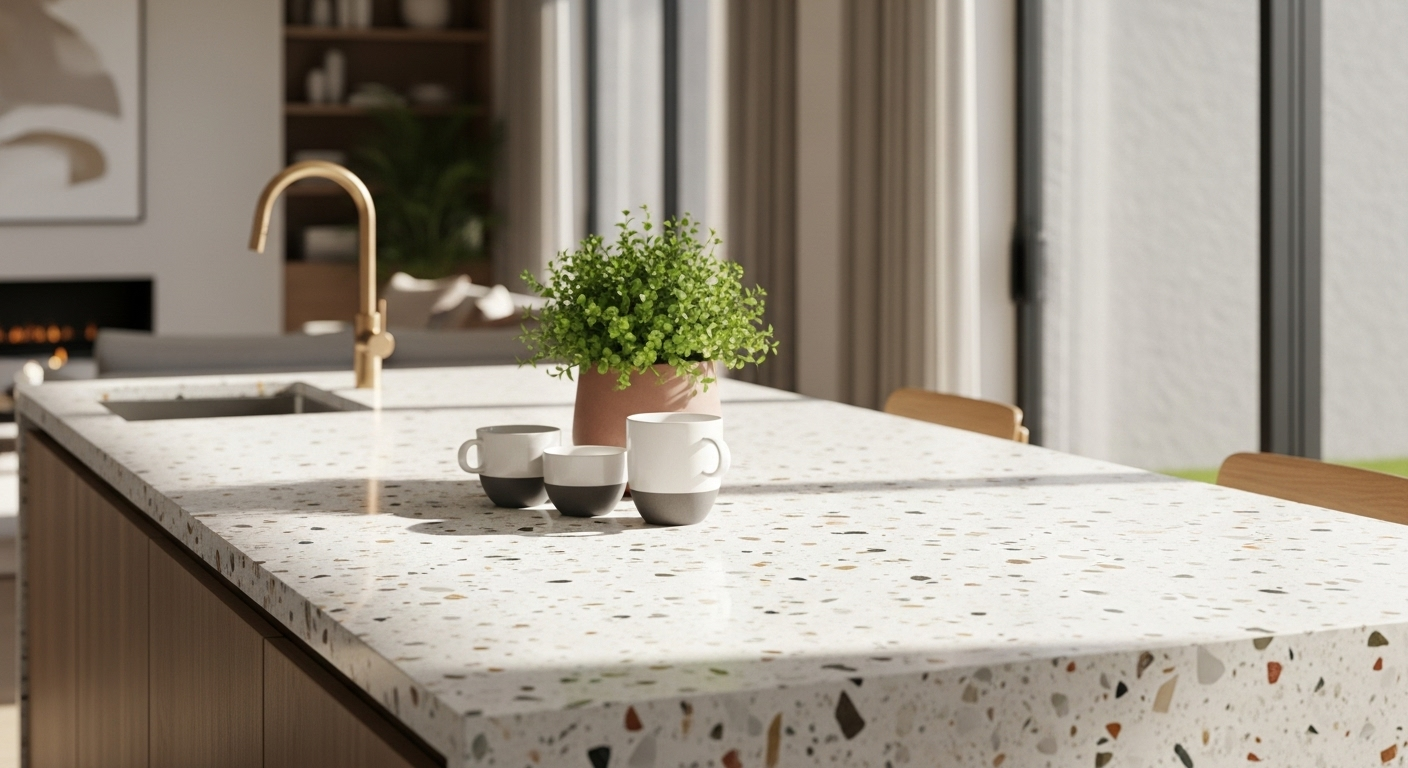Terrazzo Renaissance: The Unexpected Comeback of a Retro Flooring Classic
Beneath our feet, a design revolution is quietly unfolding. Terrazzo, once relegated to the realm of mid-century memories and institutional hallways, is making a triumphant return to the forefront of interior design. This speckled surface, born from the creative repurposing of marble scraps in 15th century Venice, is now gracing everything from sleek penthouses to boutique cafes. But what's driving this unexpected renaissance, and how are modern designers reimagining this age-old material?

As the technique spread beyond Italy, terrazzo evolved. The advent of divider strips in the 1920s allowed for more intricate designs and color combinations, propelling terrazzo into the spotlight of Art Deco and Modernist movements. By mid-century, it had become a staple in commercial and institutional buildings, prized for its durability and low maintenance.
However, as with many trends, terrazzo fell out of favor in the late 20th century, often associated with sterile, outdated spaces. But as the saying goes, everything old becomes new again, and terrazzo is experiencing a dramatic revival in contemporary design.
The Modern Terrazzo Movement
Today’s terrazzo bears little resemblance to its institutional predecessors. Modern manufacturing techniques have expanded the possibilities, allowing for bolder colors, larger aggregate pieces, and even custom designs. Designers are now using terrazzo not just for flooring, but for countertops, wall cladding, and even furniture.
One of the key drivers of terrazzo’s resurgence is its alignment with current design philosophies. The material’s speckled appearance adds texture and interest to minimalist spaces without overwhelming them. Its customizable nature allows designers to create bespoke patterns and color schemes that perfectly complement a room’s aesthetic.
Moreover, terrazzo’s sustainability credentials are attracting eco-conscious consumers. Made primarily from recycled materials and boasting impressive longevity, it aligns well with the growing demand for environmentally friendly design options.
Beyond the Floor: Innovative Applications
While flooring remains terrazzo’s primary use, innovative designers are pushing the boundaries of its application. In kitchen design, terrazzo countertops are gaining traction as a unique alternative to granite or quartz. These surfaces offer the durability of stone with the added benefit of customizable patterns and colors.
In the bathroom, terrazzo is making a splash in unexpected ways. From shower walls to vanity tops, the material adds a touch of artistic flair to these utilitarian spaces. Some designers are even creating terrazzo-inspired tiles, allowing for easier installation and more accessible pricing.
Furniture designers have also embraced terrazzo, incorporating it into table tops, lamp bases, and even entire chairs. These pieces serve as statement accents, adding visual interest and texture to living spaces.
The Technical Side: Modern Terrazzo Production
The resurgence of terrazzo isn’t just about aesthetics; it’s also driven by advancements in production techniques. Traditional terrazzo required skilled craftsmen and was time-consuming to install. Modern methods have streamlined the process, making terrazzo more accessible and cost-effective.
Epoxy terrazzo, for instance, offers a thinner, lighter alternative to traditional cement-based terrazzo. This allows for easier installation and opens up possibilities for use in a wider range of settings, including high-rise buildings where weight is a concern.
Pre-cast terrazzo is another innovation gaining traction. This method allows for the creation of complex shapes and designs off-site, which can then be installed quickly and easily. This is particularly useful for creating unique furniture pieces or architectural elements.
Terrazzo in the Digital Age
In our increasingly digital world, terrazzo’s organic, tactile nature provides a welcome contrast. Its speckled appearance, reminiscent of static on an old TV screen, offers a playful nod to technology while remaining firmly grounded in the physical world.
This juxtaposition hasn’t gone unnoticed in the tech sector. Several major tech companies have incorporated terrazzo into their office designs, using it to add warmth and texture to otherwise sleek, modern spaces. The material’s ability to be customized with company colors or even logo designs makes it an attractive option for creating branded environments.
The Future of Terrazzo
As we look to the future, terrazzo’s versatility and sustainability suggest its resurgence is more than just a passing trend. Researchers are exploring ways to make terrazzo even more eco-friendly, experimenting with aggregates made from recycled glass, plastic, and even electronic waste.
There’s also growing interest in terrazzo’s potential in outdoor applications. With the right sealants and installation techniques, terrazzo can withstand the elements, opening up possibilities for unique landscaping features and outdoor living spaces.
In the world of interior design, the terrazzo renaissance is a reminder that sometimes, the most innovative solutions come from reimagining the past. As this ancient material continues to evolve, it’s clear that terrazzo’s speckled charm will be leaving its mark on design for years to come.





